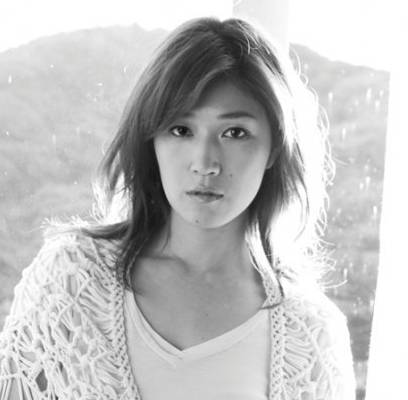This post will touch on Japanese singer-songwriter Asada Kaori, or most famously known by her stage name, BONNIE PINK.

Now that we have covered Hamasaki in Part One, and Utada in Part Two, we will now talk about good old BONNIE PINK. Though I place BONNIE PINK under J-pop, she has covered all types of genres throughout her career of almost 25 years. Jazz, Rock, Blues, Hard-Rock, Funk, and experimental pop. And because of this, I have to say, BONNIE PINK is one of my favorite Japanese singers. Though it is hard for me to get into her earlier works released in the mid to late ’90s, I do enjoy her releases after 2000; I can listen to most of her albums from start to finish (compared to other J-pop albums which I skip and play around with).
To me, each BONNIE PINK album offers a very unique listening experience. And not to say that Ayumi and Hikaru don’t foster a unique listening experience, they do. But with Kaori, every song I listen to from her, every album I touch on, is like a beautiful piece of artwork. While she is very well-known in Japan, she is rather low-key, and when I hear BONNIE PINK play her guitar and sing with her cute lisp, I feel I am listening to profound deep music. I don’t know why. Maybe it’s because she’s the only singer I know with a lisp, which makes her vocals very unique and distinguishable when it is mixed with the enticing instrumentals. English is also her second language and yet she sings it so fluently that you would think she was Japanese-American even though she was born and raised in Kyoto. In her twenties and thirties, she did spend time in New York and Sweden to study music making her experience as a female musician also unique.
Even though the stage name BONNIE PINK was randomly made up, in this article I want to give it meaning; seeing how BONNIE PINK reflects Asada Kaori. While Kaori is the one that makes the music, it is BONNIE PINK that shines through. And it shines through so effortlessly. Her lyricism is complex, yet her style is minimal and very simple. She doesn’t have to try hard to be simple, elegant, funky, or upbeat. Her lyrical style is hard to describe, but they are written in such a way that it blends well with her musical personality. The lyrics together with music and visuals express the complications of life in such a mystical way. BONNIE PINK uses a lot of spiral metaphors that convey pain, love, and all the other trial and tribulations humans have to go through. And when she sings, one is offered a very interesting musical ride. Both the lyrics and music give the listener a taste of Kaori’s mood expressed through BONNIE PINK. Whether Kaori is calm, peaceful, spiritual, angry or even depressed.

And when you listen to Asada Kaori turn into BONNIE PINK, you get into the vibe as well. It’s as if her personality flows right through you like water. And BONNIE PINK loves water. She loves to swim in it as with her MV Perfect Sky (2007) and Kite (2010), sing in it as with her MV Tonight, the Night (2003), and even sing about it with her song Tsumetai Ame (2012). And with this thematic love for water—this love for life, throughout my time with BONNIE PINK, I can sense a beautiful transformation like a seed blossoming into a flower. But with each album, you notice a specific theme of searching to know thy self to eventually understanding the meaning of love and moving towards world peace. You can really really notice this change just by listening to BONNIE PINK’S first album Blue Jam, released in 1995 when she was 22 years old, to her most recent album Chasing Hope, released in 2012 at the age of 39.
Throughout the years you notice the transformation of Kaori Asada merging into BONNIE PINK, you feel refreshed and proud of her work. Blue Jam is very dark, grungy, and bluesy while Chasing Hope is free-spirited, calm and relaxing. And truly, Chasing Hope is by far my favorite BONNIE PINK album. It is a pure masterpiece. And through the journey, we start from a young BONNIE PINK angry and depressed at life to a wise, mature BONNIE PINK dreaming of all the best for life. And this is why the music experience with BONNIE PINK is so mesmerizing and truly enjoyable. I am not sure whether or not BONNIE PINK was truly aiming for this in the creative process. But it is enlightening. Just go through it yourself, and enjoy the BONNIE PINK experience.





